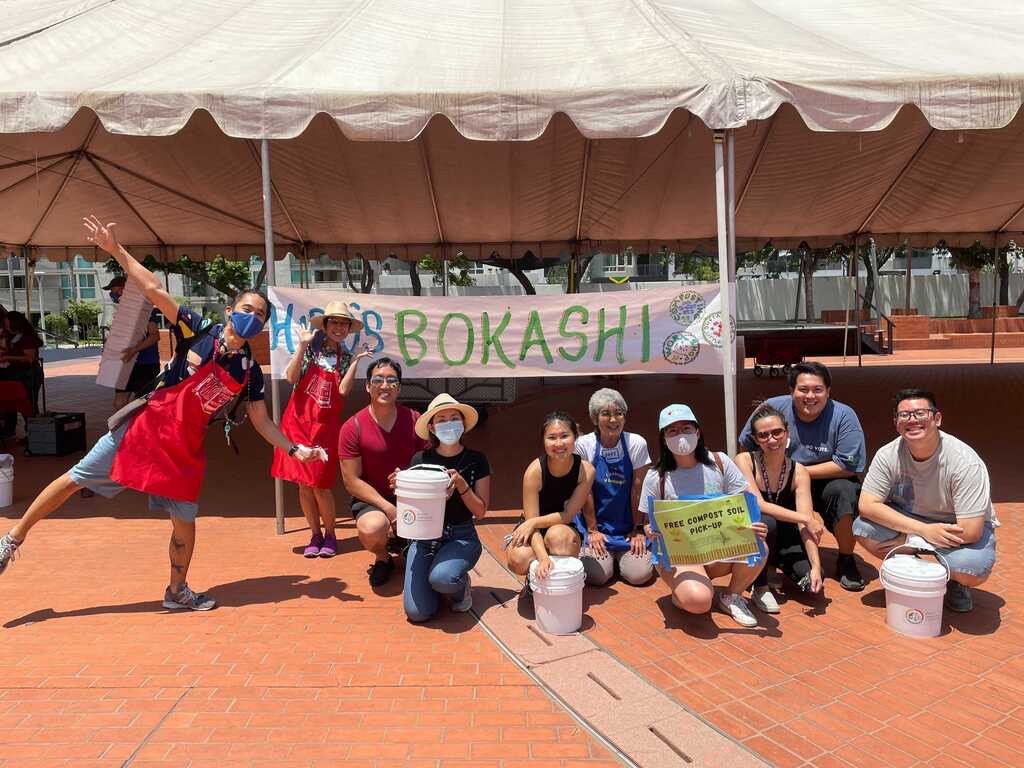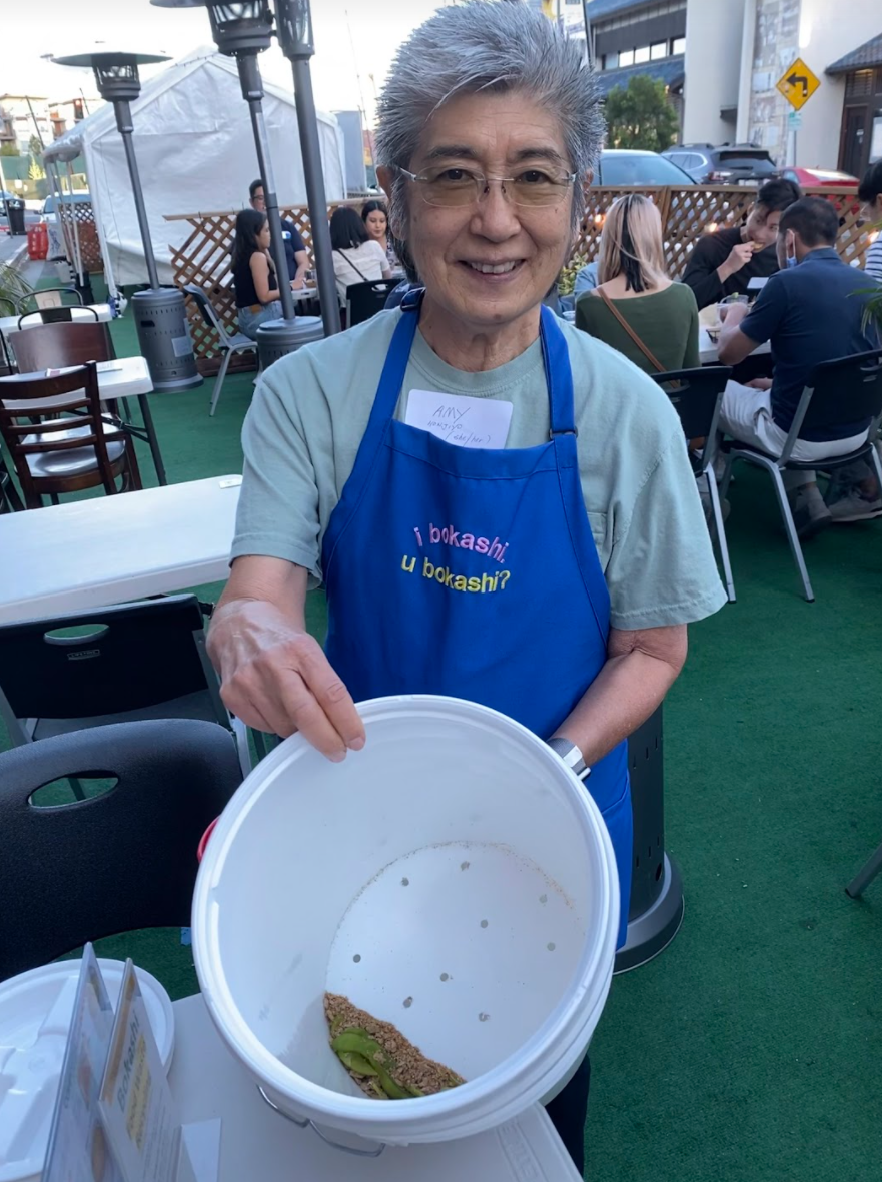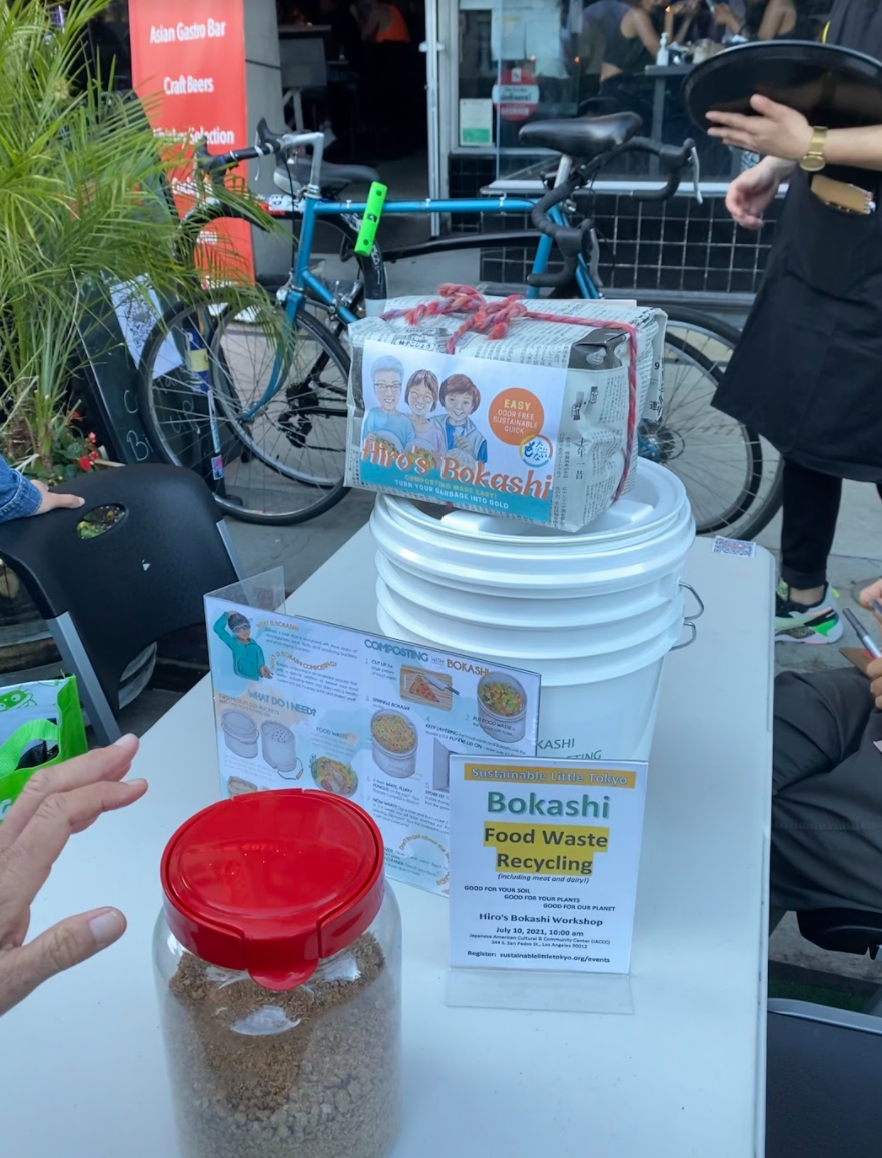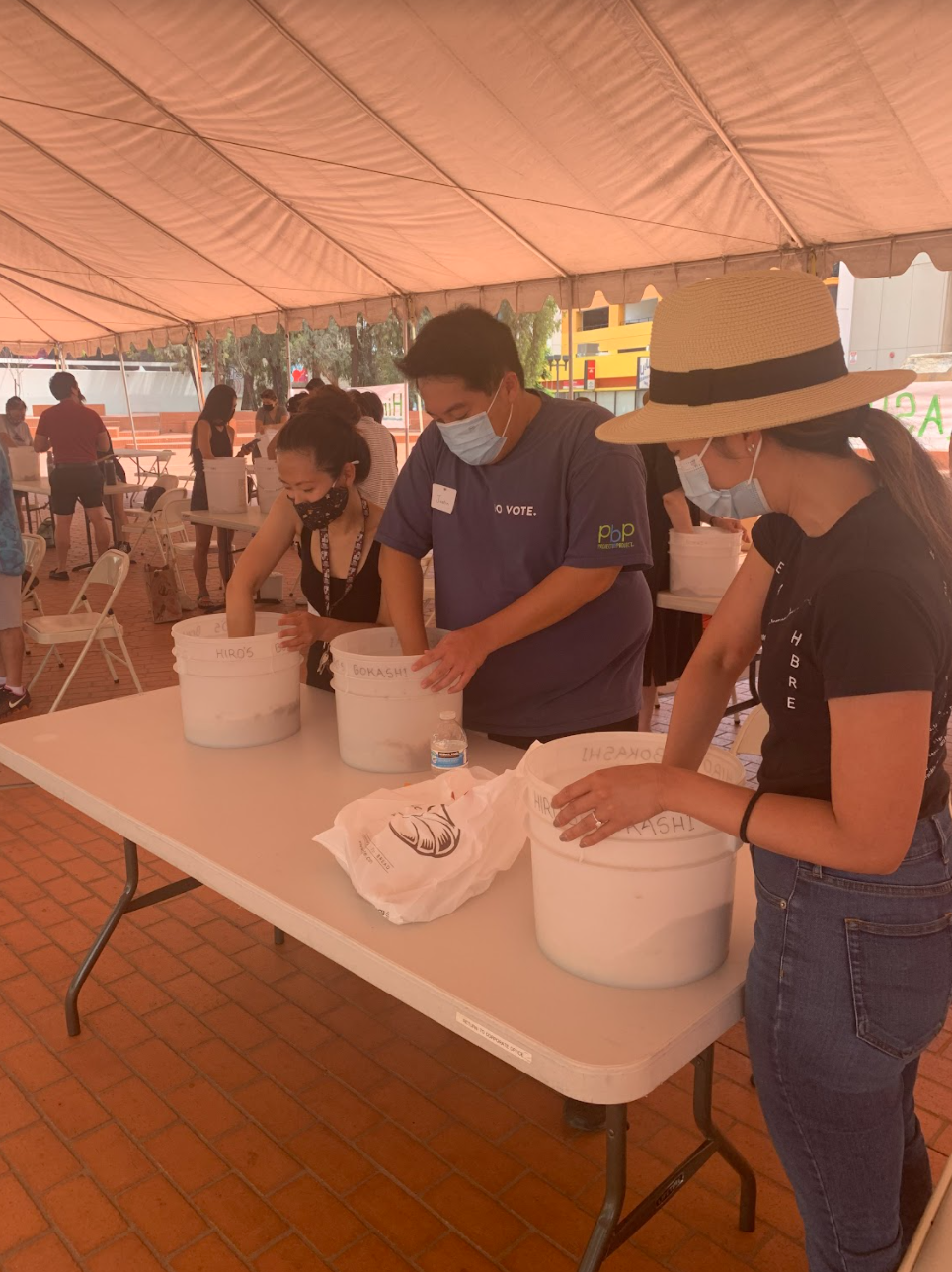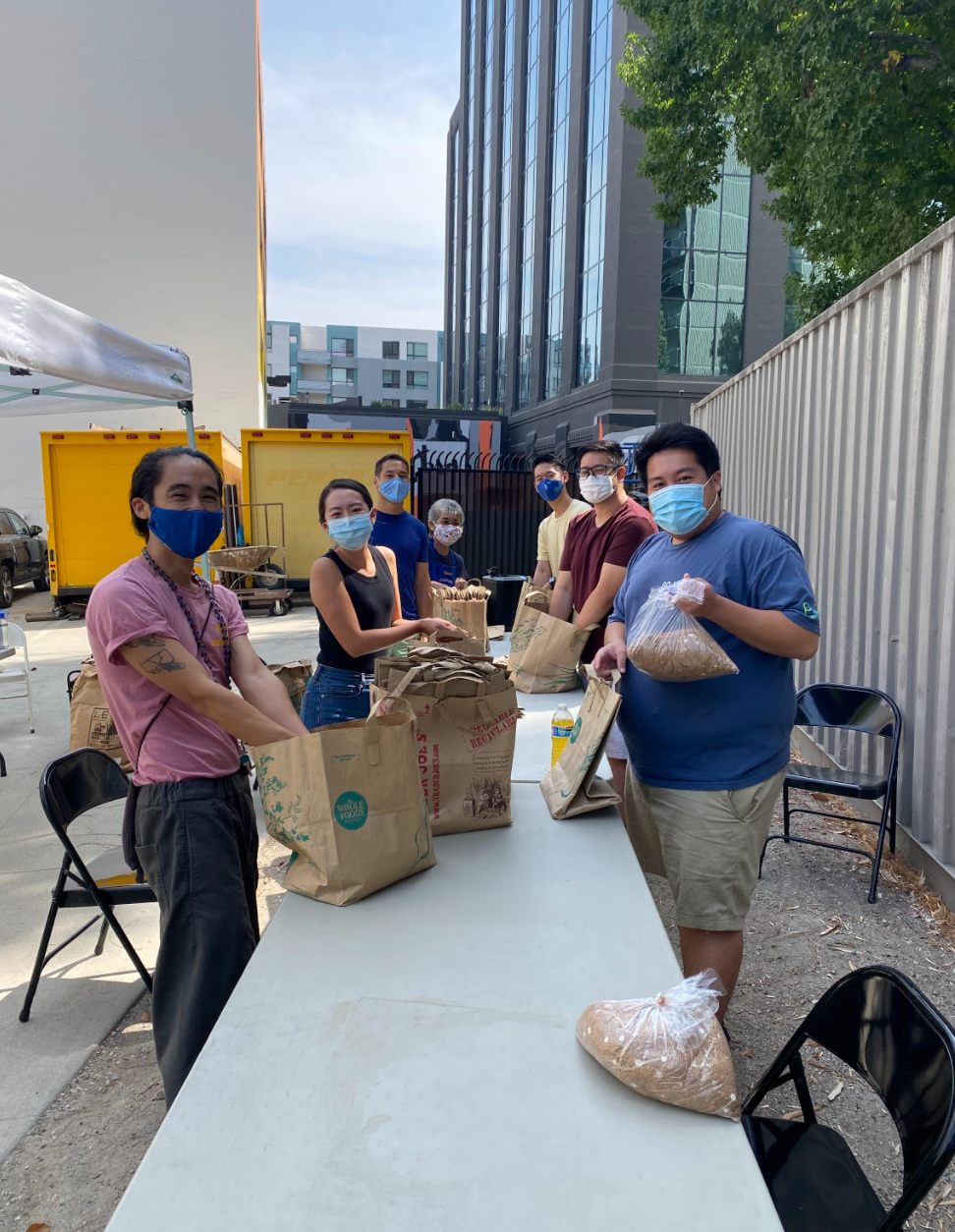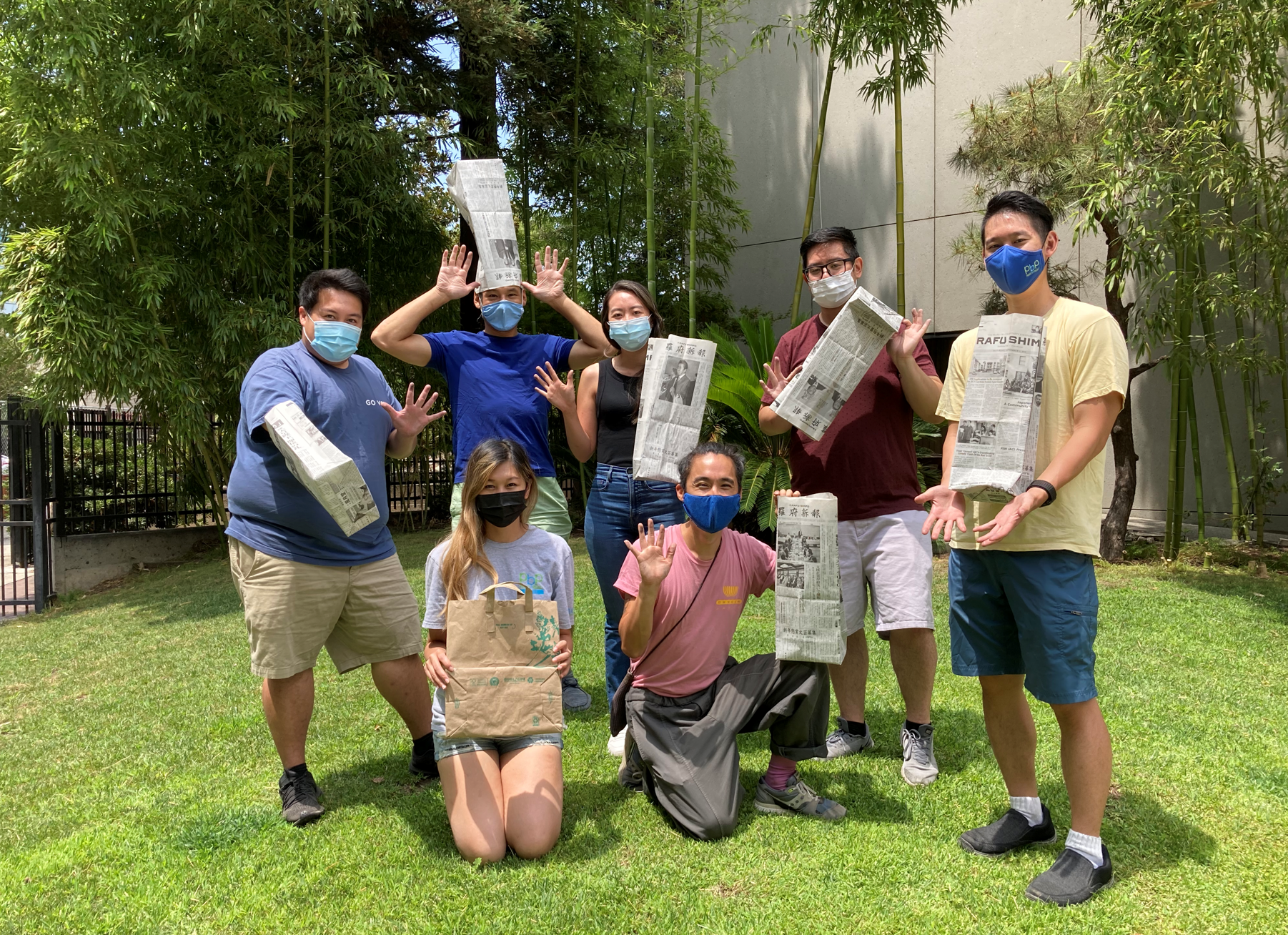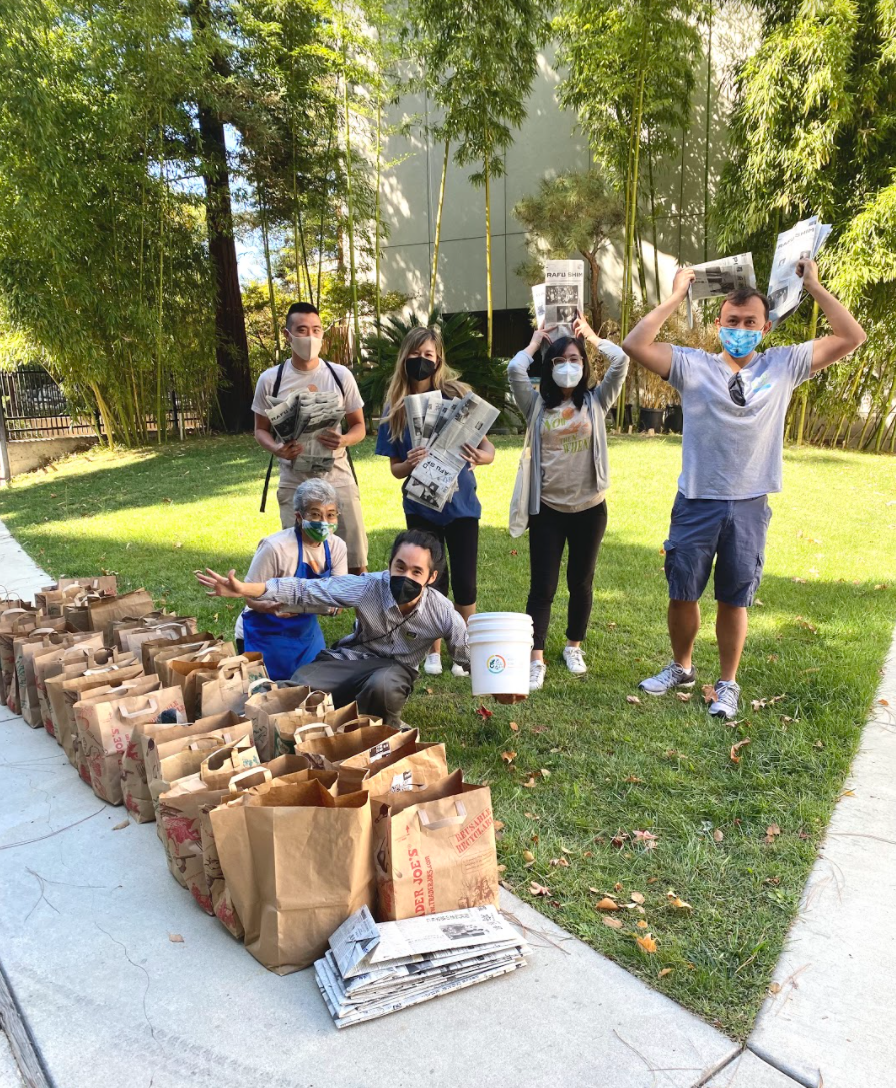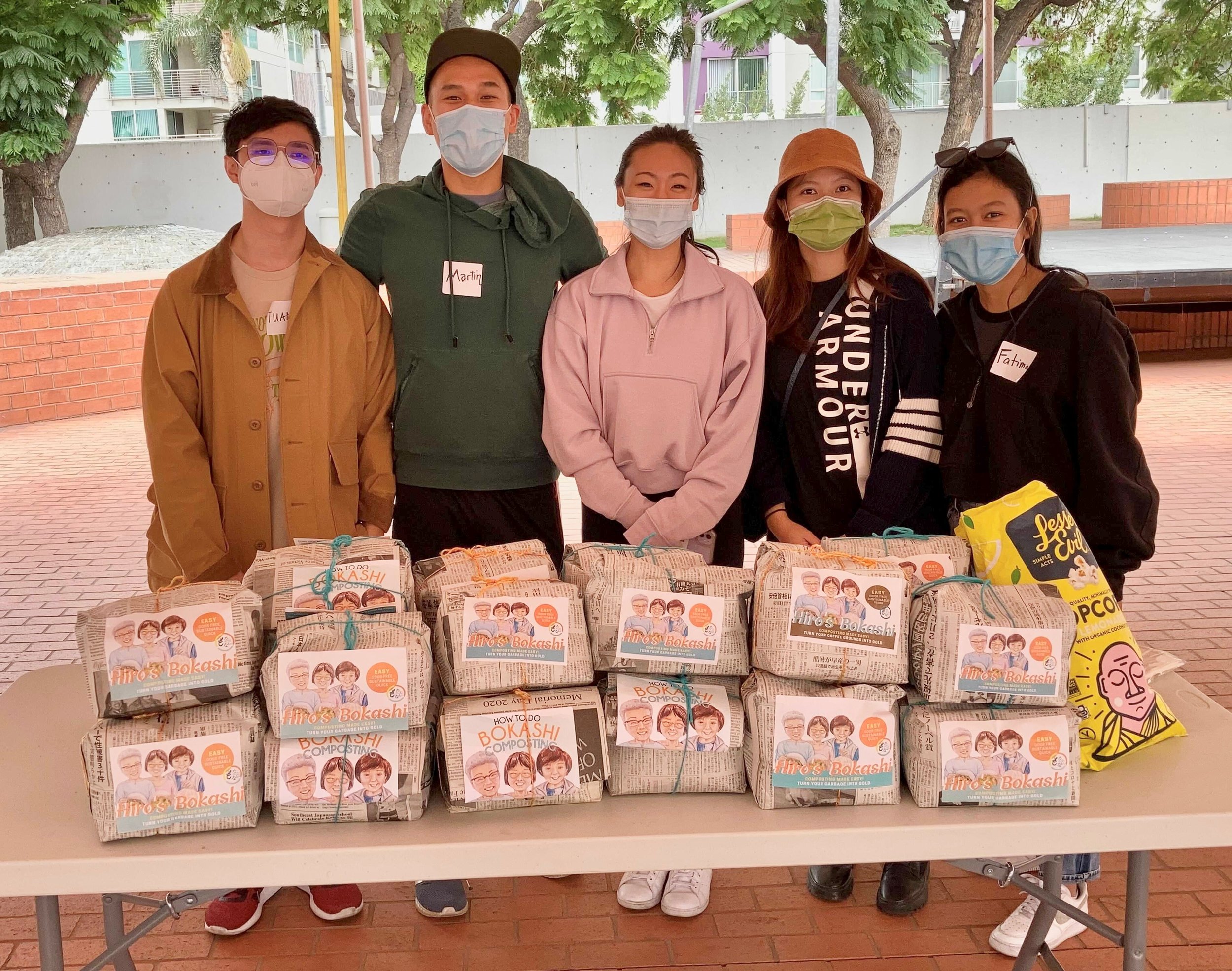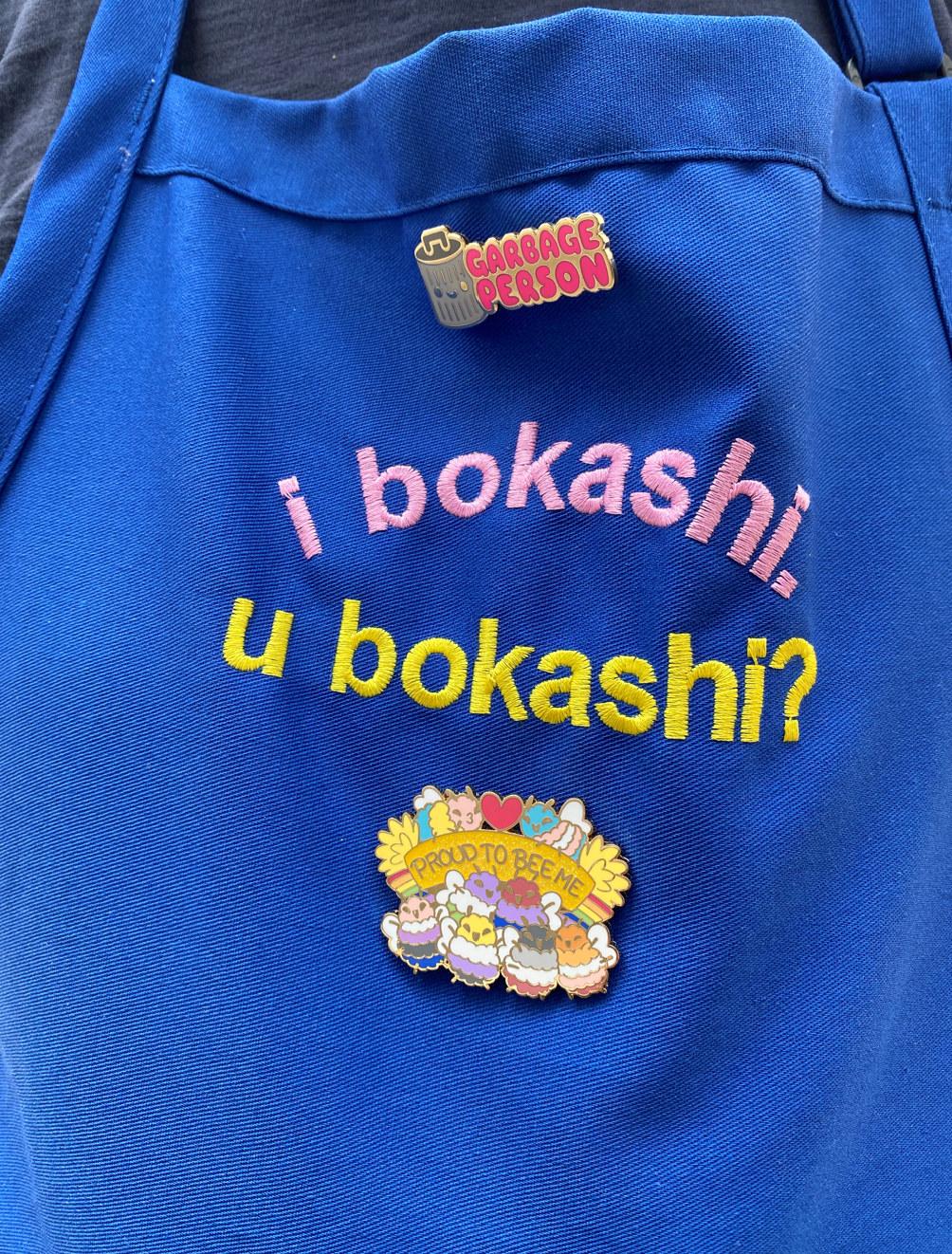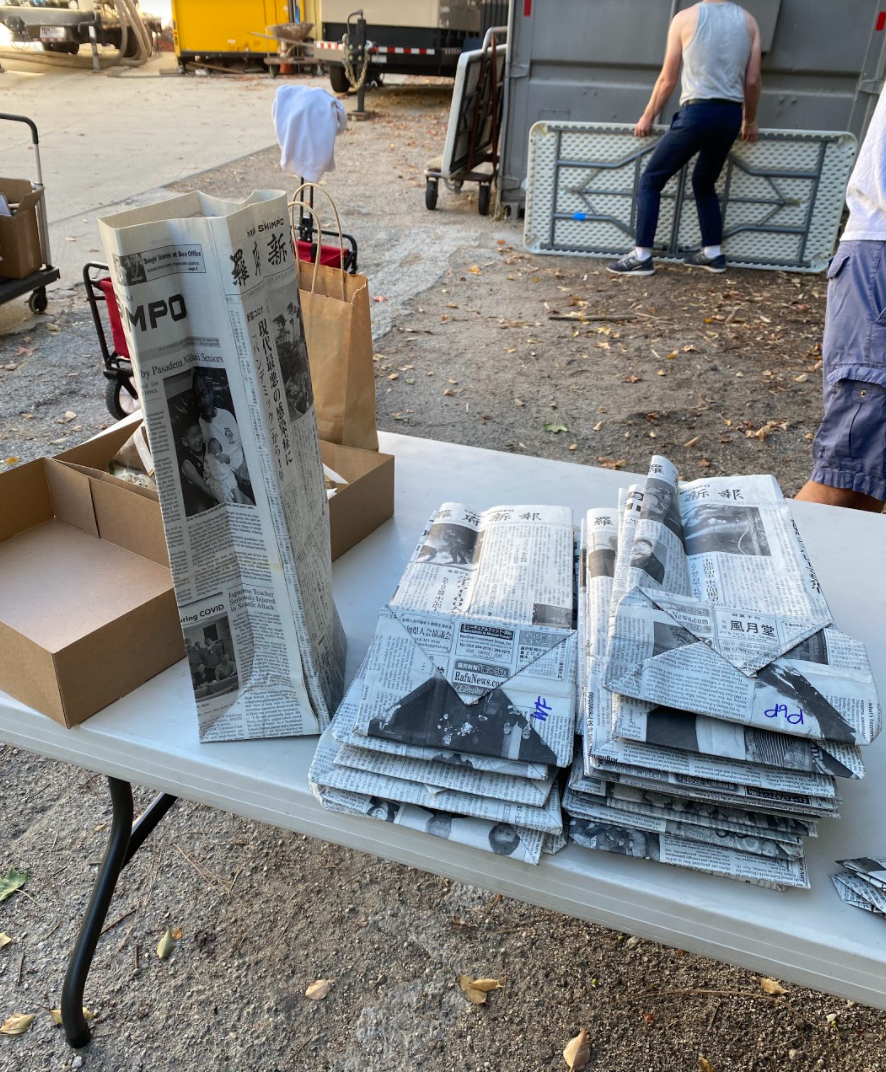PbP Planting a Greener Future Blog Series #4: BOKASHI COMPOSTING
This post is written by Angela Law, PbP Outreach Director and Winnie Fong, PbP LA Chapter President.
Sustainable Little Tokyo and PbP promoting Bokashi Composting Kits
An Okinawan tradition, Bokashi composting is an anaerobic process that relies on inoculated bran to ferment food waste into a healthy nutrient rich soil for plants. Bokashi is bran that is inoculated with three strains of microorganism: yeast, lactic-acid producing bacteria, and phototropic bacteria. This method uses a mix of microorganisms that combat food rotting bacteria (and rotting odors), increases the speed of decomposition and enhances plant growth.
How does Bokashi Composting work?
All food waste can be put in the bucket including meat, bones, any leftovers from your plates, dairy, eggshells, coffee grounds, and more.
Bokashi composting method uses a mix of microorganisms to decrease smell
Hiro’s Bokashi Club
Sustainable Little Tokyo (SLT) conducts Hiro’s Bokashi Club workshops led by SLT Food Coordinator Amy Honjiyo (aka Trash Lady) and makes pre-made bokashi kits available to purchase here. PbP volunteers helped SLT with the production of 60+ bokashi kits between July and October of this year. This process included mixing the bokashi liquid and wheat bran by hand and then sealing it in airtight bags for two weeks for the microbes to slowly ferment the bran. Our volunteers returned to dry the bokashi bran in reusable paper bags. We made origami paper bags to package the bokashi once it was dried and ready to use for composting.
How to Use Bokashi Composting
Are you ready to start Bokashi Composting? Here is a quick guide to start:
Materials you’ll need:
One medium sized bucket with holes drilled in the bottom to allow fluids to drain
One medium sized bucket with airtight lid
Bokashi
Food waste
Step by step guide:
Cut up large pieces of food waste
Place food waste into the bucket with holes
Sprinkle Bokashi on top
Keep layering the food waste and Bokashi until the bucket is full.
Once the bucket is full, seal with an airtight lid and place the sealed bucket in a dark storage area for 1-2 weeks to ferment.
Once you see white, fluffy fungus on top, it is ready to be buried
Dig a hole and bury under 2 inches of dirt. In 2-4 weeks, you’d be left with enriched soil
Some tips!
Be sure to use enough Bokashi. If it smells, generously add more Bokashi
For those who live in an apartment, you can use a large planter or find a community garden to bury the compost. Alternatively, you can bring your compost to a regular community compost center.


